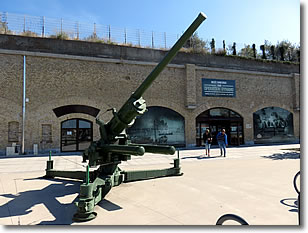|
|
|
Dunkirk (Dunkerque in French) is France's most northern city (map), right on La Manche (the English Channel), only 10 kilometers (6.2 miles) west of the border with Belgium, and 74 km (46 miles) northwest of Lille. Dunkirk is famous for Operation Dynamo, the heroic, seemingly impossible task of evacuating over 330,000 WWII British and Allied troops in peril of destruction by German forces during the Battle of Dunkirk (May-June 1940). About 90% of the city of Dunkirk was destroyed during that battle and during the fighting at the end of WWII, but with France's third-largest harbor, there was no doubt the city would be rebuilt after the war. What to See & DoThus, the history to see in Dunkirk is not in its period architecture but in its museums and memorials. The Musée Dunkerque 1940 Operation Dynamo, located in the historic Bastion 32 headquarters of the evacuation command, brings it to life. (For a vivid portrayal of the evacuation, watch the movies released in 1958 and 2017, both named Dunkirk.) Today, most visitors to Dunkirk are going to the beach. The broad strand of fine sand stretches from Dunkirk's harbor and Malo-les-Bains beach near the Musée Dunkerque 1940 and two of Dunkirk's contemporary art museums all the way into as far as Ostend. More... TransportTrainDunkirk is a one-hour train trip northwest of Lille, and 300 km (186 miles) north of Paris. The modern Gare de Dunkerque SNCF serves trains connecting Dunkirk with Lille, Calais, and other French and Belgian towns. It's a 12-minute walk (800 meters/a half-mile) from the gare to the Place Jean Bart and the Office de Tourisme in the city center. More... FerryboatCar-and-passenger ferryboats from Dover, England arrive at Loon Plage, Gravelines, 20 km (13 miles) west of Dunkirk (map), a 40-minute train-and-bus ride from the city. More... City BusWithin the city, public buses take you everywhere you'll want to go, and are free of charge at all times. More... HotelsWhether you're visiting for beach or history, Dunkirk can accommodate you:
|
|
Musée Dunkerque 1940 Operation Dynamo,
|


